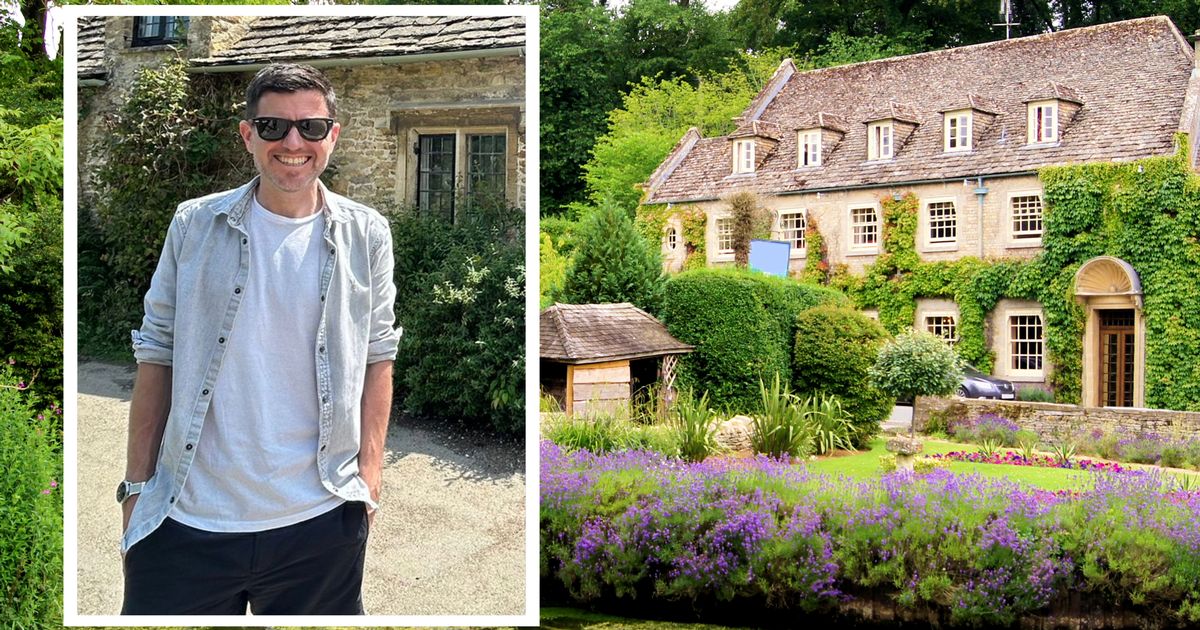It is famously known as ‘the most beautiful village in England’ with its rows of golden stone cottages and charming rural setting — but there’s one major issue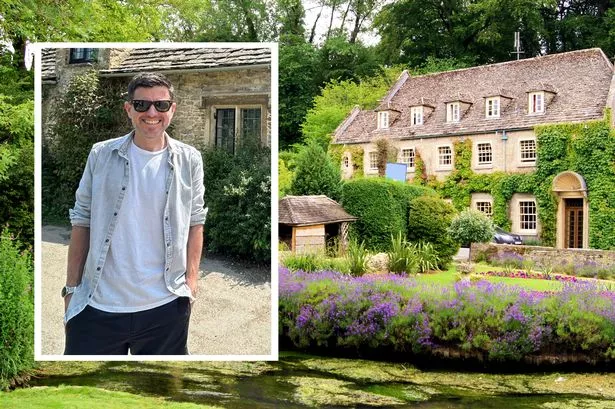 I visited ‘most beautiful village’ one hour from Wales — one thing put me off instantly
I visited ‘most beautiful village’ one hour from Wales — one thing put me off instantly
The poet and artist William Morris declared it “the most beautiful village in England”. And as the founder of the Arts and Crafts movement in Britain during the 19th century, I assume he knew what he was talking about when it comes to beauty.
And he’s not wrong about Bibury, a small yet exquisitely beautiful village nestled in the Cotswolds, north-east of Cirencester. Before my arrival, I had caught glimpses of the village in various photographs and it was so gorgeous I suspected some photography tricks were involved — could it genuinely be that pretty?
It truly is. Try to picture the quintessential British village crossed with Harry Potter, or imagine what an American sees when they think of a rural British village, and you’d be thinking along the right lines – but still probably not getting close to just how pretty it is.
It is charming, cute, fairytale and has a strong claim to be the crown jewel even of an area as beautiful as the Cotswolds. And you can be there in a little over an hour from south-east Wales.
The river Coln runs peacefully through the heart of the village, crossed by a couple of low stone bridges. Cows graze on grassland beside the road near the Swan Hotel, which dominates the village centre (and also has what might be the most beautiful beer garden in Britain) and the Bibury Trout Farm breeds fish that are sold and eaten in restaurants all over the Cotswolds (including Jeremy Clarkson’s pub, The Farmer’s Dog — you can read about my visit here).
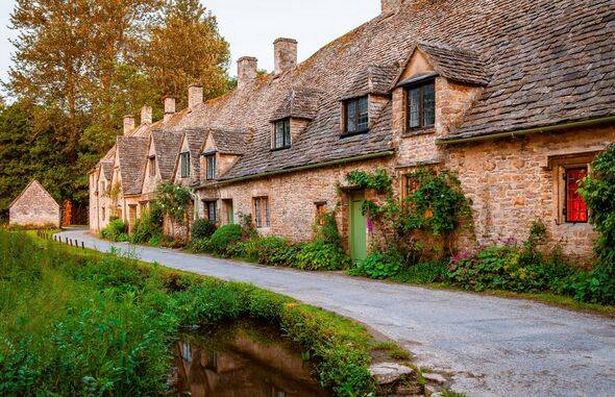 Arlington Row is one of the most photographed streets in the country(Image: Getty)
Arlington Row is one of the most photographed streets in the country(Image: Getty)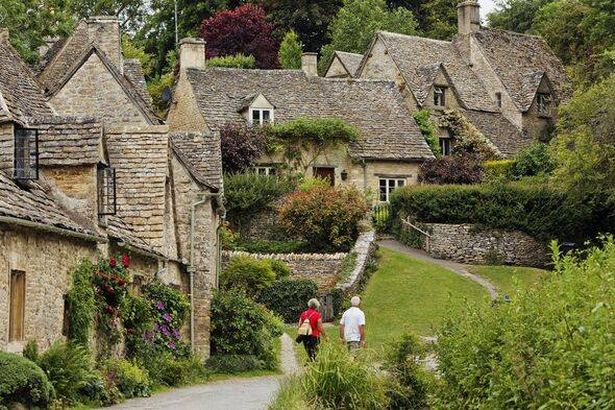 Arlington Row is a row of weavers’ cottages built of local stone next to the River Coln(Image: Getty)
Arlington Row is a row of weavers’ cottages built of local stone next to the River Coln(Image: Getty)
Bibury’s real showstopper is Arlington Row, a row of cottages originally built of local stone in 1380 next to the River Coln as a monastic wool store before being converted to weavers’ cottages in the 17th century.
It is probably the most photographed row of houses in the Cotswolds, possibly even the UK. Life’s stresses melt away as you walk the narrow road (also called Awkward Hill) beside the cottages, first crossing a narrow stone bridge over the river, and trying to tread the equally fine line of respecting the fact that these are people’s homes while marvelling at how gorgeous they are.
Hopefully, the people lucky enough to live here enjoy the fact that, like Buckingham Palace, thousands of people take pictures of their homes every day.
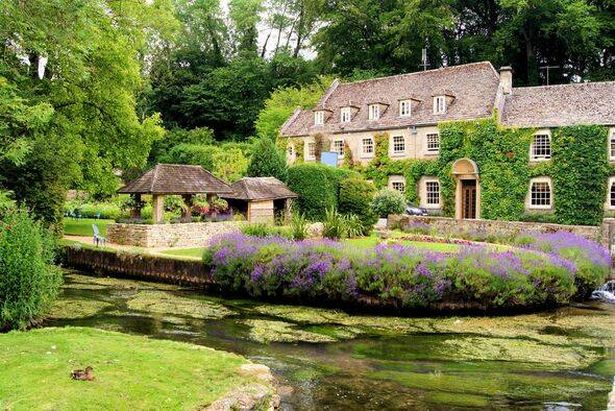 The Swan Hotel is the most imposing building in the centre of Bibury(Image: Getty)
The Swan Hotel is the most imposing building in the centre of Bibury(Image: Getty)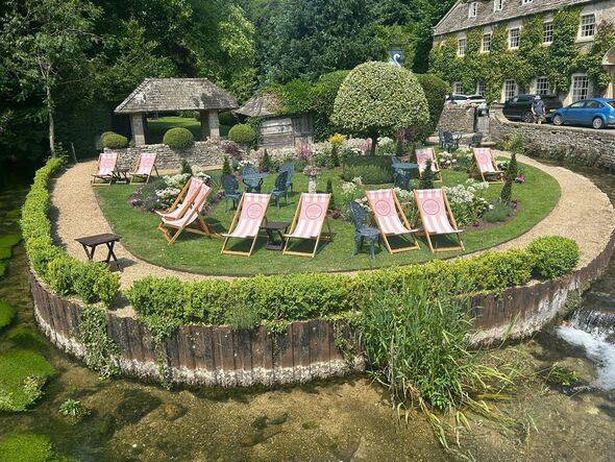 The beer garden of the Swan Hotel, surrounded by the gentle waters of the river Coln(Image: Steffan Rhys)
The beer garden of the Swan Hotel, surrounded by the gentle waters of the river Coln(Image: Steffan Rhys)
And that brings me to the one thing about Bibury that is a bit off-putting: the number of tourists here is way out of proportion to the size of the village and its ability to cope with them. The 600 or so people who live here are sharing these narrow lanes and pretty fields with coaches, tour groups and day-trippers every day — thousands of them, Express reports.
One resident, Lynn Edward, who has lived in Bibury for six years, told The Guardian earlier this year: “We have such a beautiful place that we want to share, but the level of tourism and the hordes of people that come has just made it entirely unpleasant, and the infrastructure doesn’t really cope with it.
“All they want to do is come and take a photograph. They don’t stay in the village. They don’t linger enough to really ingest the beauty and historic value of the place. It’s literally, I think, to take a selfie.”
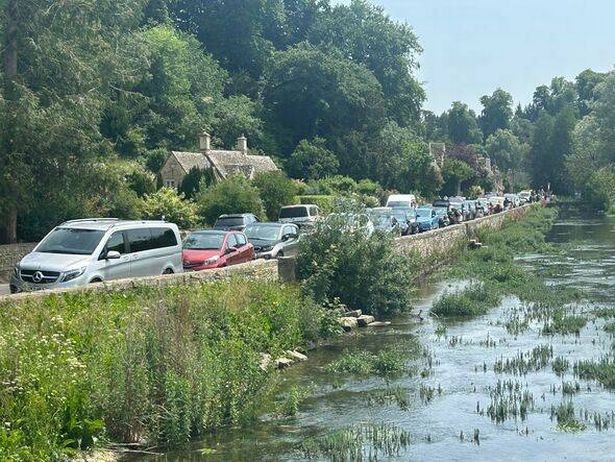 Cars are parked in long lines on the main road through Bibury, beside the river Coln(Image: Steffan Rhys)
Cars are parked in long lines on the main road through Bibury, beside the river Coln(Image: Steffan Rhys)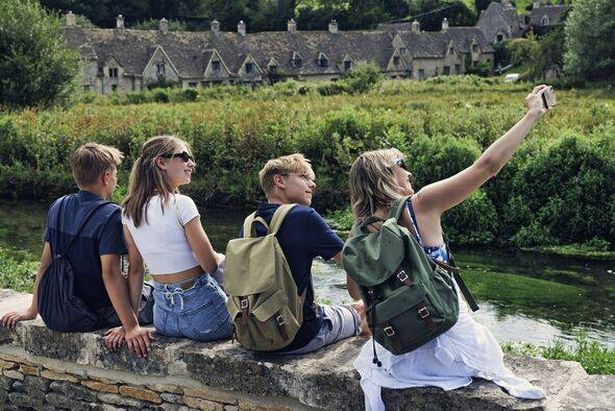 And people are very keen to grab a photo of the scene for the memories (and social media channels)(Image: Getty)
And people are very keen to grab a photo of the scene for the memories (and social media channels)(Image: Getty)
I knew in advance that Bibury was a tourist attraction — and obviously I was here as a tourist. But I didn’t appreciate just how many people there would be on a random weekday afternoon.
But it was obvious even before I got to the village centre, with groups of tourists strolling in the middle of the road en route, long lines of parked cars beside the river, several different languages from all over the world to be heard and people of all nationalities standing on Bibury’s pretty stone bridges to grab a selfie. Some of them were not especially inclined to bother moving when it was clear others wanted to get across, instead taking their time to get that perfect shot for Instagram — and some claim the rocketing number of visitors to Bibury is down to the boom in travel and tourism influencers on social media.
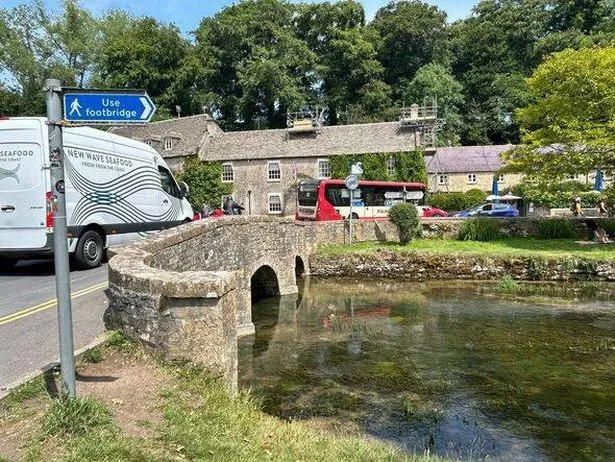 There is heavy traffic along the narrow lanes of Bibury, despite how small the village is(Image: Steffan Rhys)
There is heavy traffic along the narrow lanes of Bibury, despite how small the village is(Image: Steffan Rhys)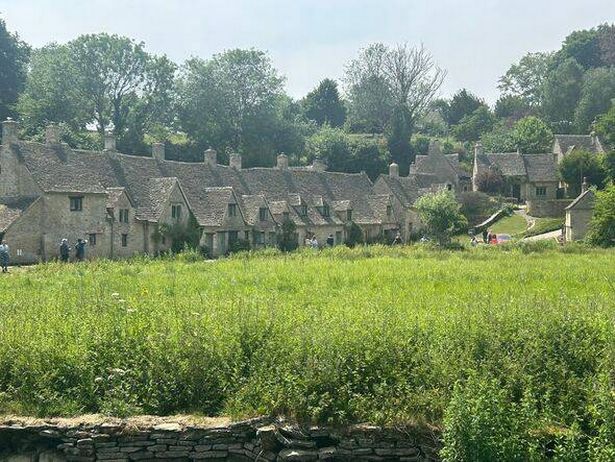 A relentless stream of tourists walks beside the cottages on Arlington Row(Image: Steffan Rhys)
A relentless stream of tourists walks beside the cottages on Arlington Row(Image: Steffan Rhys)
There’s even a large car park on the outskirts of the village, where visitors are charged £5 to park before walking into the heart of the village. There is enough space for 300 cars but villagers say even this is not enough on some days. The narrow lane between the car park and the village is a tight squeeze when trying to cope with two-way traffic as well as all the tourists on foot.
While many would assume that such a large number of tourists would also bring a significant economic benefit, people in the village don’t seem convinced that’s the case.
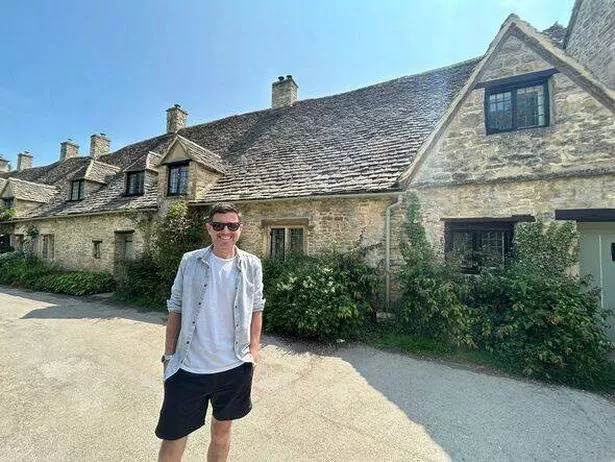 I visited the ‘prettiest village in England’ and tried to be respectful while enjoying its beauty(Image: Steffan Rhys)
I visited the ‘prettiest village in England’ and tried to be respectful while enjoying its beauty(Image: Steffan Rhys)
Victoria Summerley, a journalist and author who has lived there since 2012, says: “[The villagers] would say [the tourists] don’t put any money into the village.”
It is clearly a difficult balance. While tourism can bring benefits and people are often proud to share the beauty of where they live with visitors, it is understandable that villagers who call Bibury home are frustrated by the extent to which it has now become a tourist attraction. It is undoubtedly a staggeringly beautiful place, and lives up to its billing as “the most beautiful village in England”, even considering the amount of competition in the Cotswolds alone. So if you do visit, please try and be as respectful as possible of the people who live here.
Things to do in BiburyArlington Row
A row of cottages originally built of local stone in 1380, next to the River Coln, is probably the most photographed street in the Cotswolds, possibly even the country. A short circular route runs from the Swan Hotel to the cottages and back along a track to the hotel.
Bibury Trout Farm
Bibury Trout Farm is one of Britain’s oldest trout farms. Founded in 1902, you will find its trout on the menu in restaurants around the Cotswolds. It is open to the public while being a working trout farm producing hundreds of thousands of trout (brown, blue and rainbow) a year. It also has an on-site smokery. You can buy the trout on site and in the village shop. Entry to the farm costs £9 for adults.
Swan Hotel
The beautiful Swan Hotel is perhaps the most prominent building in Bibury, its walls covered in greenery. You can stay here or simply book a table for lunch or dinner. It also has arguably the most beautiful beer garden in Britain, with deckchairs set almost on an island surrounded by the tranquil River Coln.
Eleven Bibury
With interiors designed by Laurence Llewelyn-Bowen, Eleven Bibury is a mixture of cafe, restaurant, art space and shared working space just across the main road from the river. Grab a brunch, a slice of cake or coffee and escape the crowds of tourists outside.
